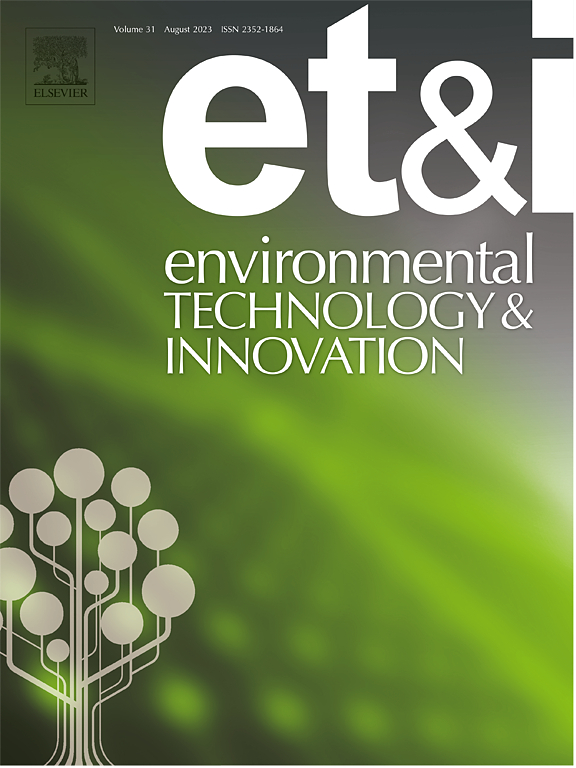中国西南喀斯特河流中微塑料的分布、来源和迁移
IF 6.7
2区 环境科学与生态学
Q1 BIOTECHNOLOGY & APPLIED MICROBIOLOGY
引用次数: 0
摘要
微塑料(MPs)已成为河流生态系统中的重要污染物,但它们在喀斯特河流中的运输和分布在很大程度上仍未被探索。本文研究了中国西南喀斯特河流乌玛河地表水和沉积物中的MPs (20-500 μm)。主要发现表明,MPs丰度在地表水中为4 ~ 122 n/L,在沉积物中为172.25 ~ 16594.73 n/kg,以片段(~ 90 %)为主。超过85% %的MPs尺寸在20-100 μm范围内,其中聚氨酯(PU)和聚对苯二甲酸乙二醇酯(PET)是最普遍的聚合物。MPs主要来源于居民活动、农业、河岸旅游以及轮胎和道路磨损。喀斯特河道特征在MPs滞留中起重要作用。溢流水坝增加了较小尺寸MPs (20-50 μm)的滞留,而地下河网、大型巨石和河岸植被影响下游的移动和再分配。此外,河道疏浚有效地减少了MPs在沉积物中的积累。研究结果促进了对喀斯特河流系统中MPs行为的理解,强调了有针对性的缓解策略来保护这些生态脆弱环境的必要性。本文章由计算机程序翻译,如有差异,请以英文原文为准。
Distribution, sources, and transport of microplastics in a karst river of Southwest China
Microplastics (MPs) have emerged as a significant pollutant in riverine ecosystems, yet their transport and distribution in karst rivers remain largely unexplored. This study examines MPs (20–500 μm) in surface water and sediments of the Wuma River, a karst river in Southwest China. Key findings indicate that abundance of MPs ranged from 4 to 122 n/L in surface water and 1702.25 to 16,594.73 n/kg in sediments, with fragments (∼90 %) dominating. More than 85 % of MPs fall within the 20–100 μm size range, with polyurethane (PU) and polyethylene terephthalate (PET) as the most prevalent polymers. MPs mainly originate from residential activities, agriculture, riverbank tourism, and tire and road abrasion. Karst river channel characteristics play a significant role in MPs retention. Overflow dams increase retention of smaller-sized MPs (20–50 μm), while underground river networks, large boulders, and riparian vegetation influence downstream movement and redistribution. Additionally, river dredging effectively reduces MPs accumulation in sediments. The results advances understanding of MPs behavior in karst fluvial systems, emphasizing the necessity for targeted mitigation strategies to protect these ecologically fragile environments.
求助全文
通过发布文献求助,成功后即可免费获取论文全文。
去求助
来源期刊

Environmental Technology & Innovation
Environmental Science-General Environmental Science
CiteScore
14.00
自引率
4.20%
发文量
435
审稿时长
74 days
期刊介绍:
Environmental Technology & Innovation adopts a challenge-oriented approach to solutions by integrating natural sciences to promote a sustainable future. The journal aims to foster the creation and development of innovative products, technologies, and ideas that enhance the environment, with impacts across soil, air, water, and food in rural and urban areas.
As a platform for disseminating scientific evidence for environmental protection and sustainable development, the journal emphasizes fundamental science, methodologies, tools, techniques, and policy considerations. It emphasizes the importance of science and technology in environmental benefits, including smarter, cleaner technologies for environmental protection, more efficient resource processing methods, and the evidence supporting their effectiveness.
 求助内容:
求助内容: 应助结果提醒方式:
应助结果提醒方式:


